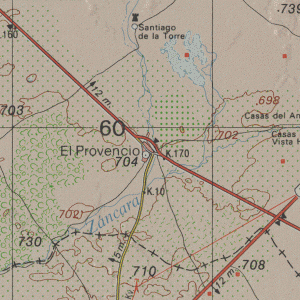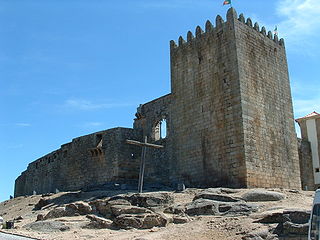Castle of Belmonte may refer to:
- Castle of Belmonte (Belmonte), medieval castle located in Belmonte, Portugal
- Castle of Belmonte (Cuenca), medieval castle in Cuenca, Spain
Castle of Belmonte may refer to:
Cuenca may refer to:
Monreal may refer to:

Belmonte Calabro, known simply as Belmonte prior to the proclamation of the Kingdom of Italy, is a town and comune in the province of Cosenza, in Calabria. The town is perched on a hilltop on the coast of the Tyrrhenian Sea.

El Provencio is a small town and municipality in Cuenca, Spain with a population of 2,599 permanent inhabitants. It offers a vibrant nightlife, attracting visitors from nearby towns like Las Pedroñeras for 'Las Fiestas'. It has kept much of its medieval heritage and is on the newly planted trail that marks the route followed by the title character Miguel de Cervantes's novel Don Quixote. El Provencio sits in the extreme southern area of Cuenca, bordering both Albacete and Ciudad Real. The major highway linking the town to the rest of Spain is the National 301 Madrid - Cartagena, and it is about 81 kilometers south of Cuenca, the city.
Belmonte may refer to:

Castellabate is a town and comune in the province of Salerno in the Campania region of south-western Italy.
Dugenta is a comune (municipality) in the Province of Benevento in the Italian region Campania, located about 35 kilometres (22 mi) northeast of Naples and about 30 kilometres (19 mi) west of Benevento.
Castillo may refer to:

The N-420 is a highway in Spain.
Cañete may refer to:
Alcazar or variant spellings may refer to:

Belmonte is a municipality located in the province of Cuenca, Castile-La Mancha, Spain. In 2009, it had a population of 2.251.

Belmonte de Gracián is a village near Calatayud in the province of Zaragoza in Aragon, Spain. It is fortified village which sits at the foot of a 15th-century castle.
Palácio Belmonte is a palace located at the Pátio de D. Fradique in Lisbon.

Alarcón is a municipality in the province of Cuenca, in the autonomous community of Castilla-La Mancha, Spain.

The Castle of Alarcón forms part of the fortifications built around the town of Alarcón in Cuenca, Spain. The fortress is composed of a walled enclosure, which houses the heart of the population and the castle proper, and of five exterior towers, separate and strategically placed.
The crime of Cuenca consisted of a series of judicial miscarriages and police misconduct that involved torture and prison sentences for the defendants, for a crime that never existed. The alleged crime related to the disappearance of a shepherd in the province of Cuenca, Spain, in 1910.

The Castillo de Belmonte is a medieval castle on the hill of San Cristobal, just outside the village of Belmonte in the southwest of the province of Cuenca in Spain. It was declared a historic monument within the National Artistic Treasury by a decree of 3 June 1931 and is now a Bien de Interés Cultural.

The Castle of Belmonte is a medieval castle located in the municipality of Belmonte, Castelo Branco district in Portugal.
Hanequin de Bruxelles was a 15th-century Flemish architect and sculptor. He is considered to have introduced the Flemish Gothic style and the Hispano-Flemish style in Toledo.